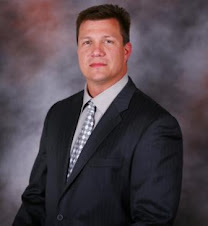Probably my favorite article is Peter Twist's about gearing up for the playoffs and his list -
You want your team to work hard in the off season and continue to ramp up to play offs with a full season conditioning commitment. You want a team that will go to work at the most important time – the final game segment leading into play offs – versus dropping off. To accomplish that through a long season and within the complex dynamics of a team of personalities, there has to be specific mechanics in place to have a successful process. First, here are the rules:
- There are challenges, but there are no excuses.
- The best players on the team are by default also leaders. Less skilled players can be leaders if they want to and have the attributes. A team’s best players are automatically in a leadership position, it is not an option.
- Your best players must lead. They must buy into training, speak positively about it, and essentially walk the walk. They don’t skip out of workouts. If they do, more players will eventually join them. If they are the most dedicated, focused and hardest working, they set the pace for the entire team. It is a dramatic effect – positive or negative.
- The head coach must be able to articulate the importance of conditioning, speak positively about it, and make it a formal part of player evaluations and the selection process. They must also have consequences in place for poor conditioning or poor adherence, and reinforce the importance of conditioning to team success.
- Support staff, including medical trainers, equipment trainers, administration, what have you, must speak positively about player development and encourage the players to commit to the time to do it as well as encourage them to go after it. If support staff is more worried about being buddy buddy with players to the point they speak poorly about team activities, weak links develop which are cancerous to the team building process.
- An injury is not a ticket to watching TV and hanging out in the trainers (medical) room. It is instead a ticket to extra weight room time, extra time on the ice/court/field, building up both the injured area as well as turning the set back into an opportunity to improve unrelated areas.
Peter Twist has coached in the NHL for 11 years and is currently a consultant for several NHL players and agents. An exercise physiologist with an MSc and specialization in Coaching Science, Twist has published over 300 papers, authored 4 books and 11 DVD’s on athlete development and delivered lectures to thousands of trainers and coaches internationally. Recognized as a leader in his industry, Twist was honoured with the National Strength & Conditioning Association's 1998 Presidents Award and CanFitPro 2003 Specialty Presenter of the Year Award. Twist is the President & CEO of Twist Conditioning Inc. For more information or to contact Peter, visit www.sportconditioning.ca For Fitness products from Peter visit www.athleteconditioning.com





No comments:
Post a Comment